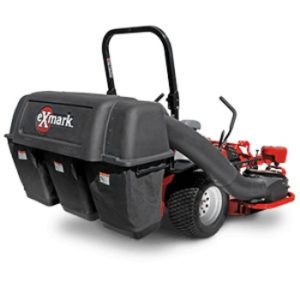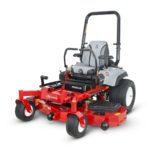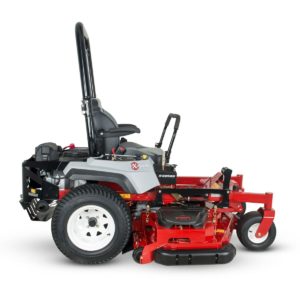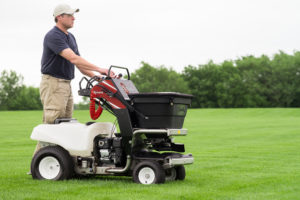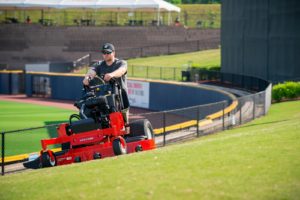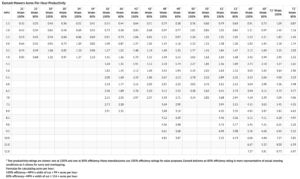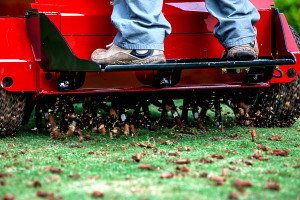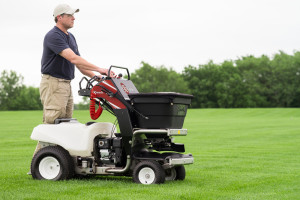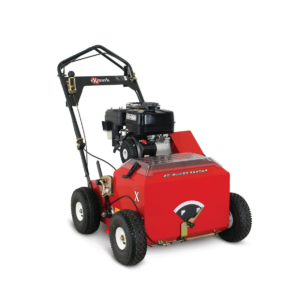
The Exmark Slicer Seeder is perfect for generating new grass for your customers and new revenue for your business.
If you’re a lawn care professional looking to expand your service offerings into turf management, but don’t want to invest in multiple machines, or a homeowner looking to rehab your lawn, but without a lot of storage space, the Exmark Slicer Seeder may be the right tool for you. This compact and powerful machine completes three tasks with every pass: verticutting, dethatching and overseeding. Therefore, it eliminates the need for separate pieces of equipment.
Dethatching is important to promote healthy lawn growth. While a quarter to half an inch of thatch provides insulation and makes lawns springy and resilient underfoot, too much thatch can be problematic as it can cause anything from root systems to dry out to mower scalping. Separately, the practice of verticutting breaks up the thatch layer to allow nutrients, oxygen and water to reach the lawn’s roots. Combining the efforts of verticutting and dethatching, along with overseeding, can help you save significant time.
The Exmark Slicer Seeder is maneuverable, easy to use, and powerful. With a 20” cutting deck and a top speed of 4 mph, it covers a lot of ground, fast. The seed hopper holds up to 40 pounds of seed, and you can adjust the amount dispersed, depending on whether you need light or heavy overseeding. The slicer blades can also be adjusted, depending on grass type, seed type, and depth of the thatch layer. Seed flow is regulated based on ground speed, so you’ll get even seed delivery, no matter how fast or slow you go. Equipped with a commercial-grade Subaru engine, this machine delivers the power and performance professionals and homeowners need to get the job done.
Verticutting two to three times per season can be beneficial for most lawns and regions of the country. In the spring, this helps to remove dead organic material from the lawn to promote healthy growth. Mid-season, verticutting allows more sun, nutrients and water to reach the soil, so you have a healthy platform for strong growth. In the fall, verticutting and overseeding are basic maintenance tasks that help to promote good growth in the following spring.
For landscape professionals, a Slicer Seeder can get you working earlier in the spring and later in the fall. Many customers want to deal with one company for all of their lawncare needs, so offering verticutting as a service can make your business more attractive to consumers. If you’re a homeowner who wants to have the best lawn on the block, this machine can perform the tasks to reach your goal. And whether you’re a pro or homeowner, the fact that the machine performs three tasks with each pass will save you time and money.

